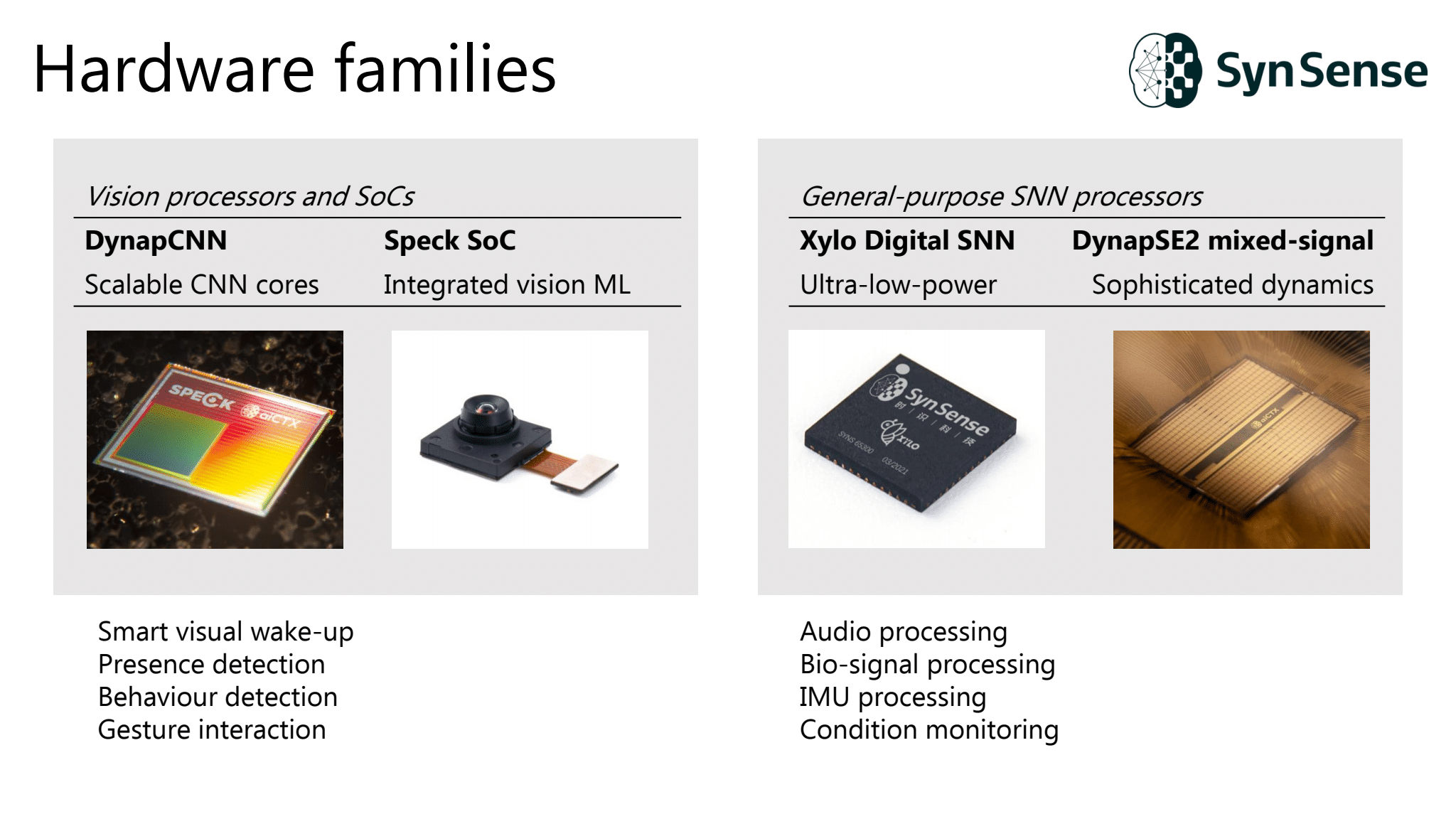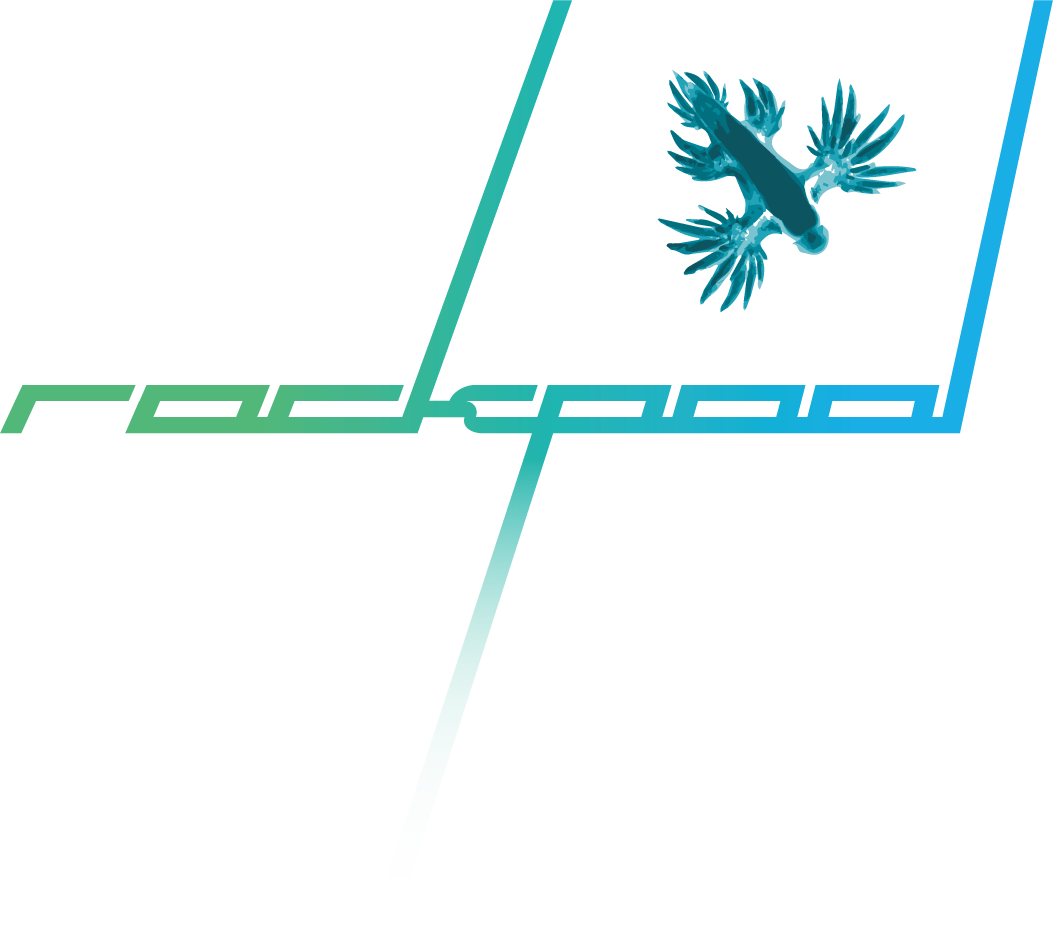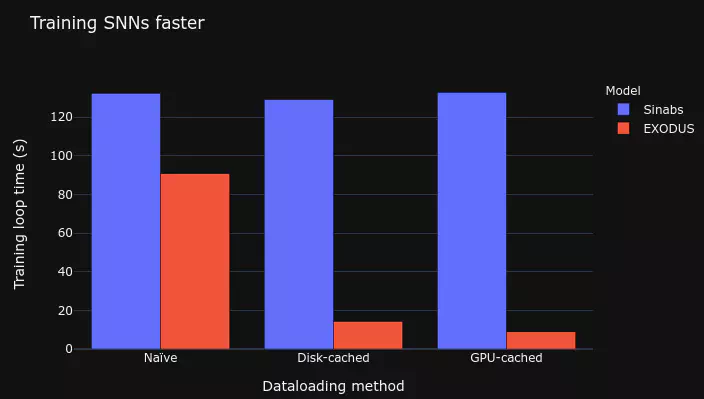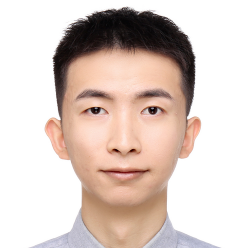Open source software at SynSense: motivation, challenges and examples
Gregor Lenz
13. 12. 2022
SynSense
- Founded 2017 in Zurich
- Spin off from UZH/ETH
- Ning Qiao and Prof. Giacomo Indiveri
- Offices in Zurich, Chengdu, Shanghai




Core tech teams at SynSense
-
Hardware team: Circuit design for our chips
-
System-integration team: interface between hardware and higher-level software. Allows to configure chips
- Algorithms team: Train spiking neural networks for different tasks
Technical challenges
- Dataloading / dataset curation
- Training robust models
- Deployment to custom hardware

Dataloading and datasets

SNN training and deployment for vision models

SNN training and deployment for audio models

Accelerated neuron models
rockpool.ai
sinabs.ai
tonic.readthedocs.io/
SynSense Github!
Why we write our own libraries
- We started in 2017
- The current list of features on top of PyTorch is not very long - manageable time effort
- Need high degree of control to move fast
- Features that we care about without the need for compromises
- Tailored to our hardware
Dataloading and datasets
- Dataloading is a serious bottleneck when training models
Dataloading and datasets
https://lenzgregor.com/posts/train-snns-fast/

Dataloading and datasets
- Dataloading is a serious bottleneck when training models
- We create our own datasets - how to manage them?
- Event-based filtering / transformations
SNN training
- Anti-features: intricate neuron models, biologically-plausible learning rules
- Focus on training speed and robustness
SNN training
EXODUS: Stable and Efficient Training of Spiking Neural Networks
Bauer, Lenz, Haghighatshoar, Sheik, 2022

SNN training
Supervised training of spiking neural networks for robust deployment on mixed-signal neuromorphic processors
Büchel, Zendrikov, Solinas, Indiveri & Muir, 2021

Model definition and deployment to Speck
import torch.nn as nn
import sinabs.layers as sl
model = nn.Sequential(
nn.Conv2d(2, 8, 3),
sl.IAF(),
nn.AvgPool2d(2),
nn.Conv2d(8, 16, 3),
sl.IAF(),
nn.AvgPool2d(2),
nn.Flatten(),
nn.Linear(128, 10),
sl.IAF(),
)
# training...
from sinabs.backend.dynapcnn import DynapcnnNetwork
dynapcnn_net = DynapcnnNetwork(
snn=model,
input_shape=(2, 30, 30)
)
dynapcnn_net.to("speck2b")
Bit-precise simulation of hardware
# model definition...
from rockpool.transform import quantize_methods as q
from rockpool.devices.xylo import config_from_specification, XyloSim
from rockpool.devices import xylo as x
# map the graph to Xylo HW architecture
spec = x.mapper(model.as_graph(), weight_dtype='float')
# quantize the parameters to Xylo HW constraints
spec.update(q.global_quantize(**spec))
xylo_conf, _, _ = config_from_specification(**spec)
XyloSim_model = XyloSim.from_confiq(xylo_conf) 
Conclusions
- Our research progress is publicly available
- Neuron models are based on hardware capabilities, unfortunately no standardized neuron models
- We offer mature frameworks that are battle-tested and are open to contributions
Algorithms team













lenzgregor.com
Gregor Lenz
Open Neuromorphic 13.12.2022
By Gregor Lenz
Open Neuromorphic 13.12.2022
- 306



